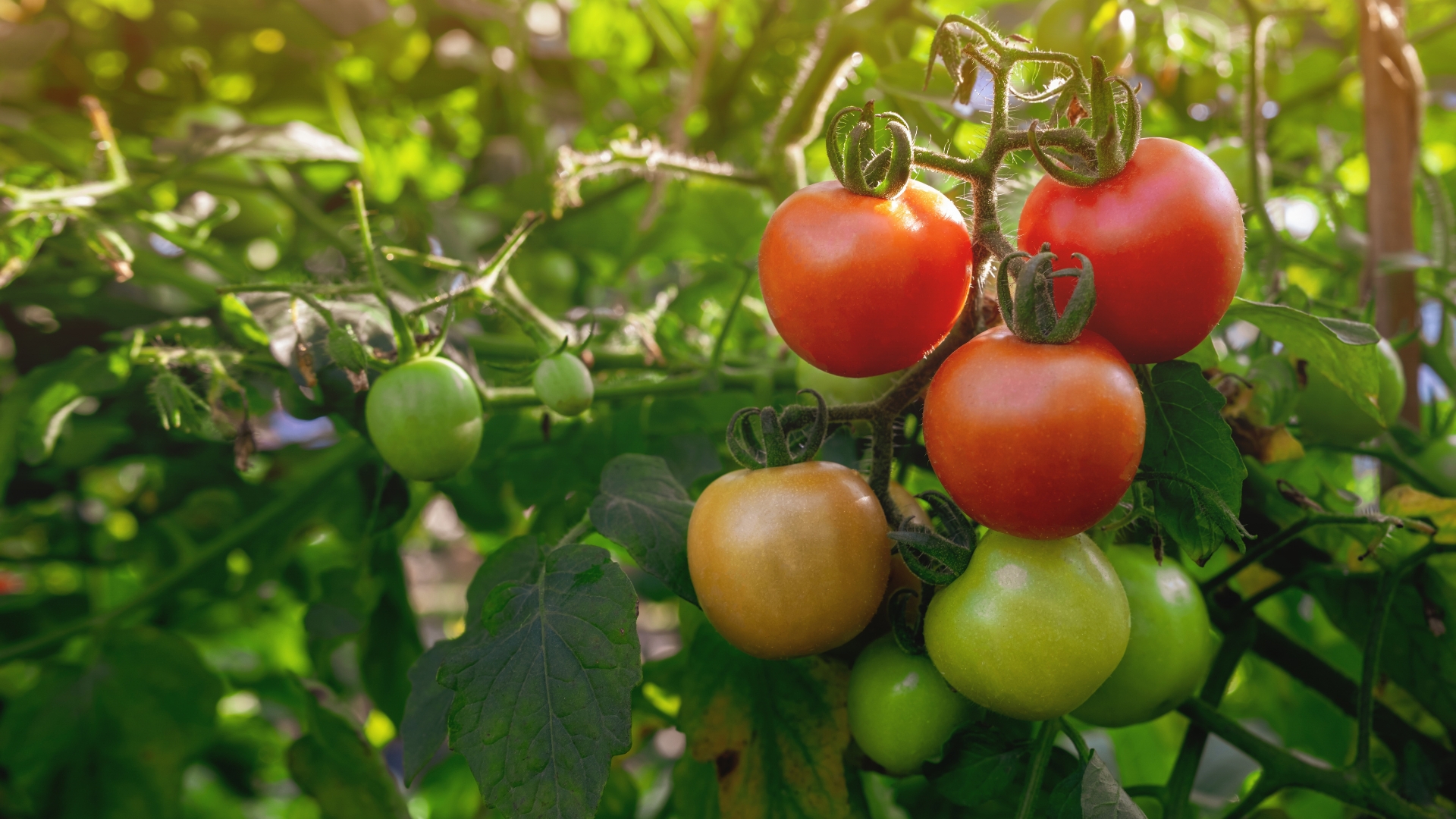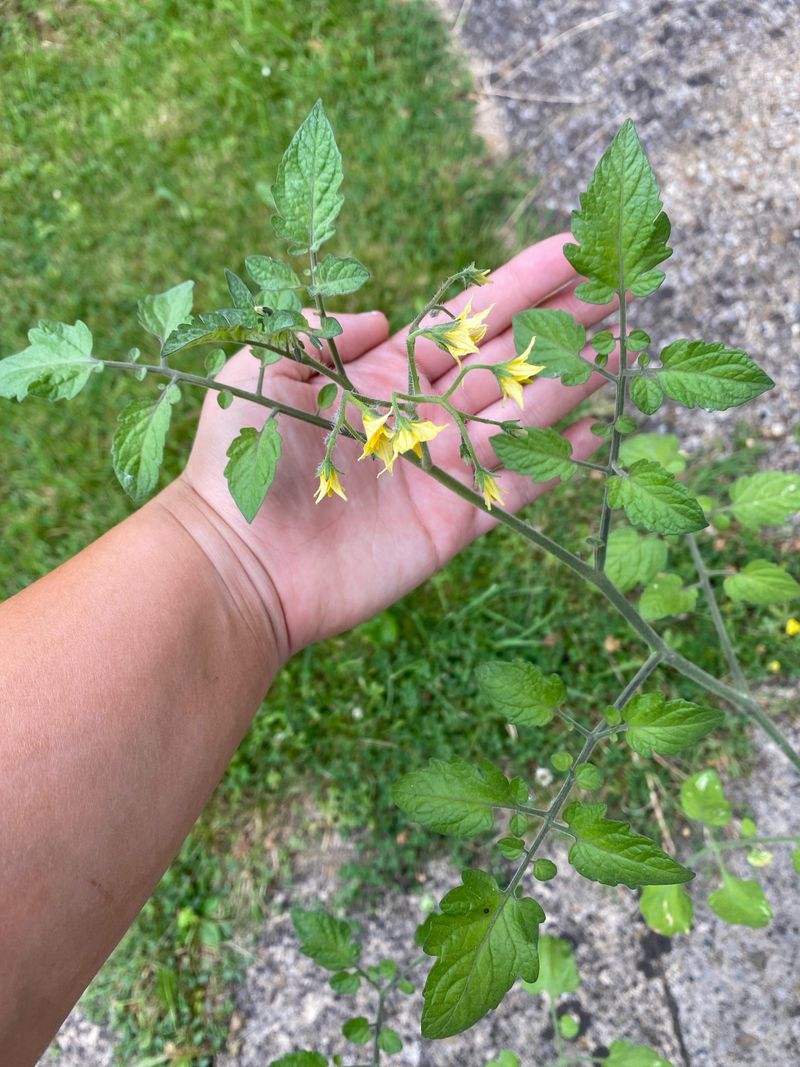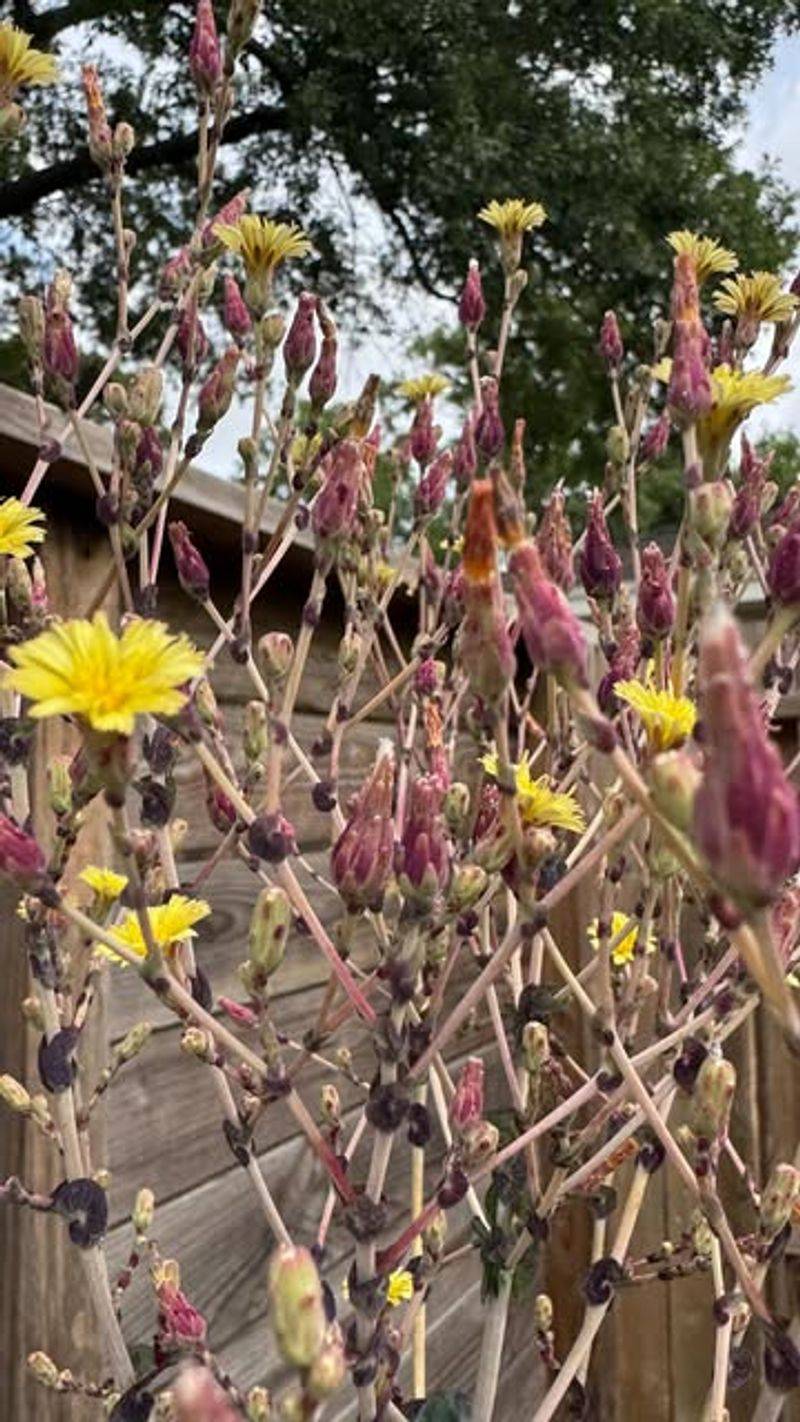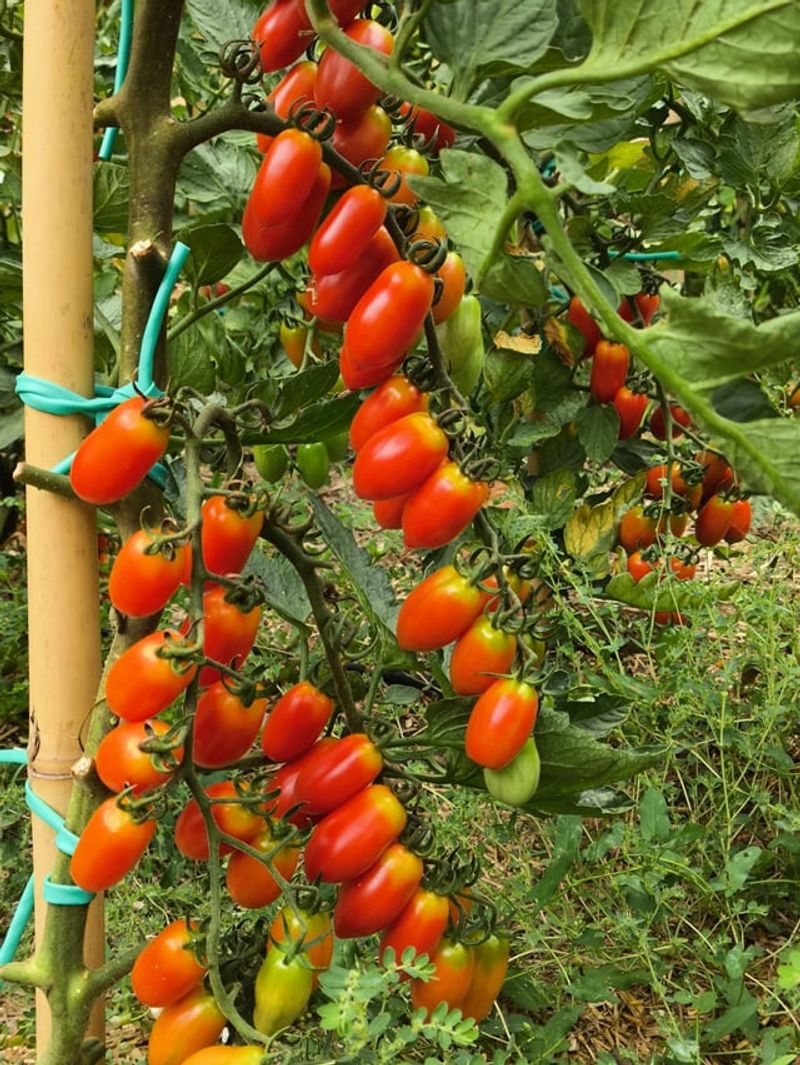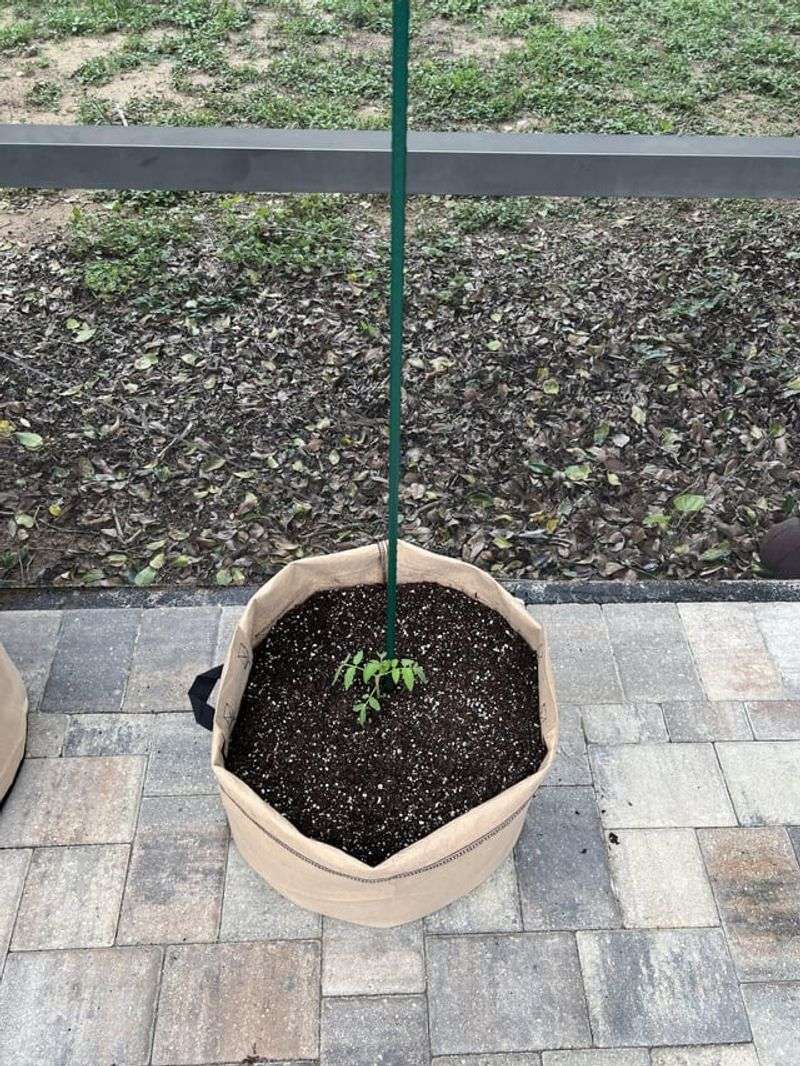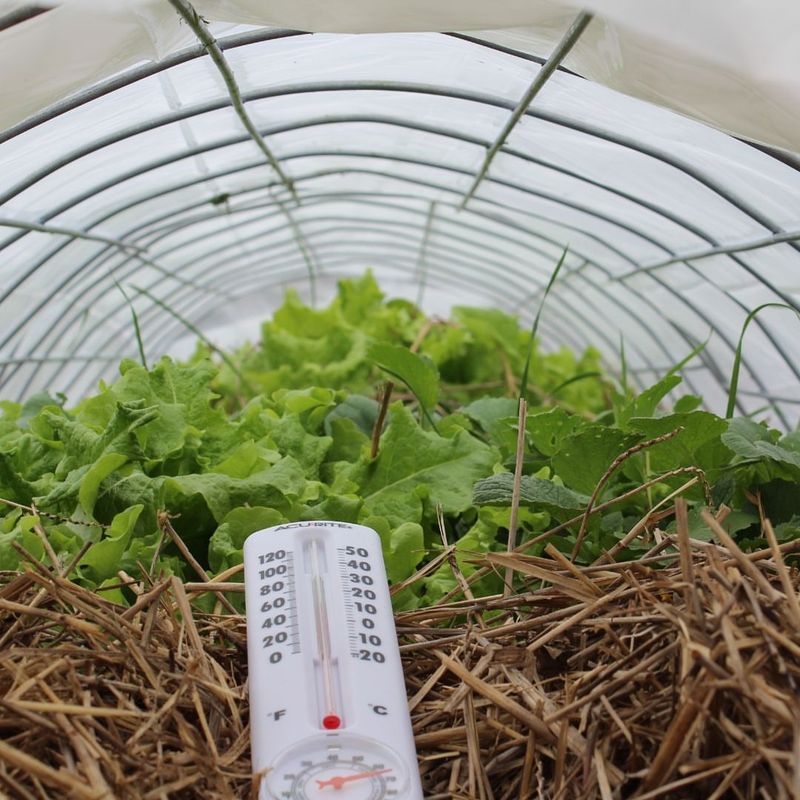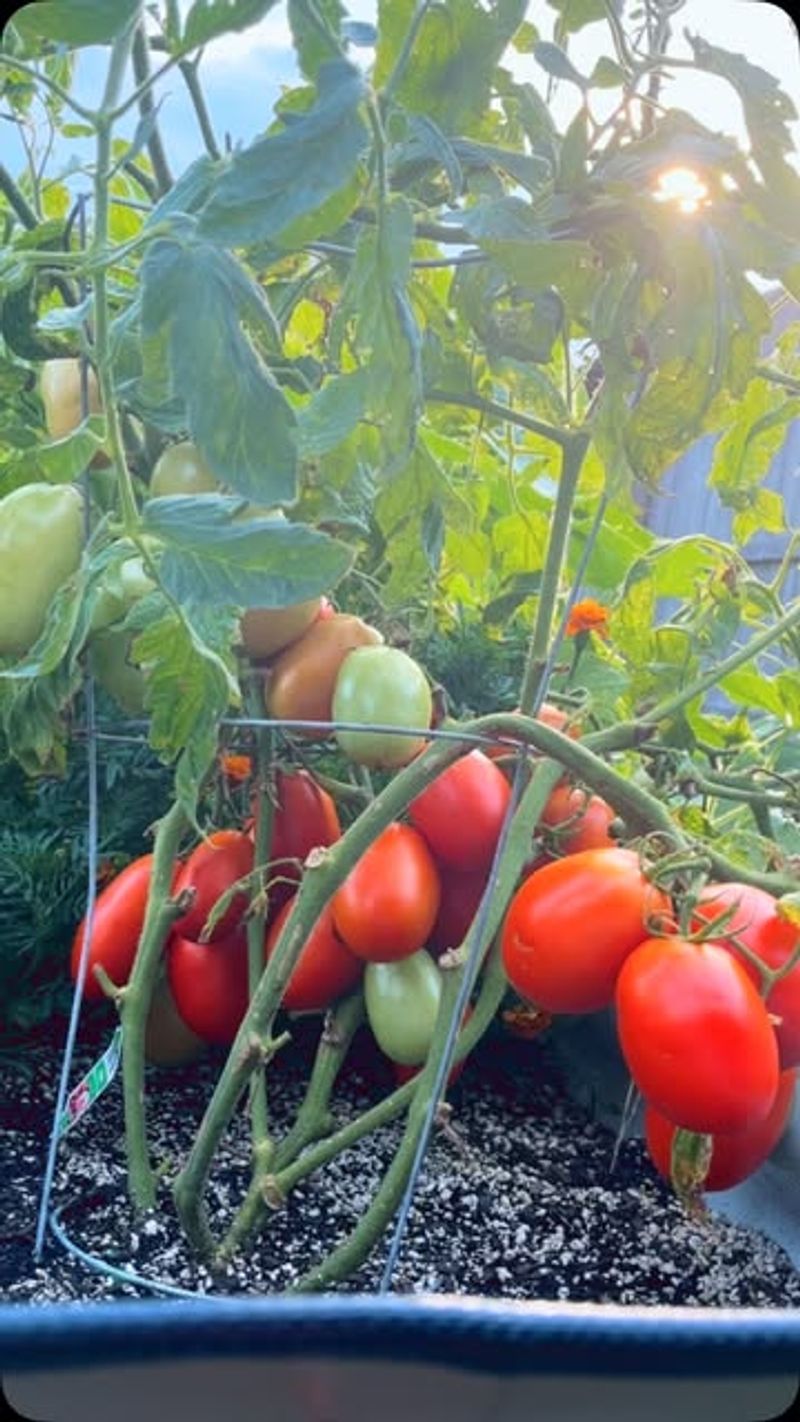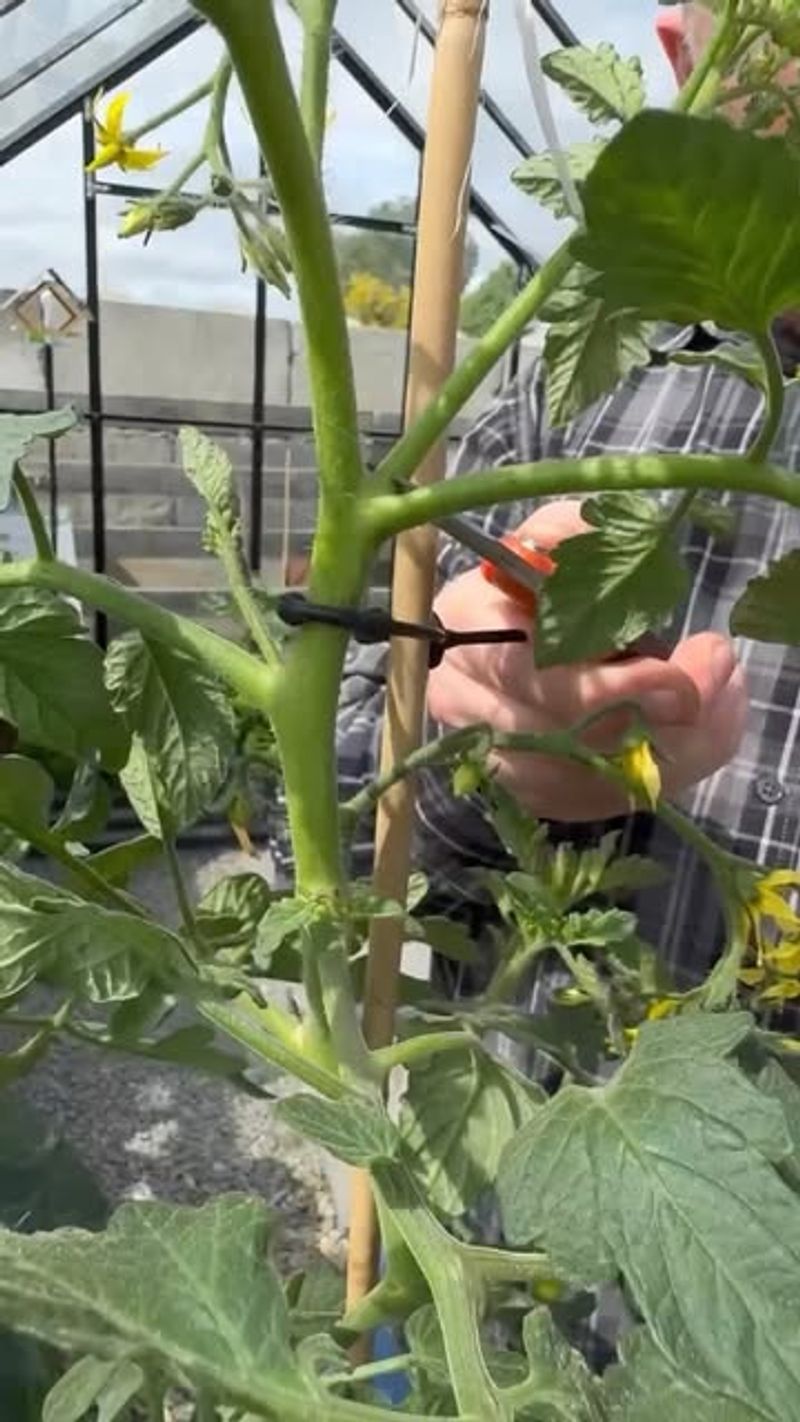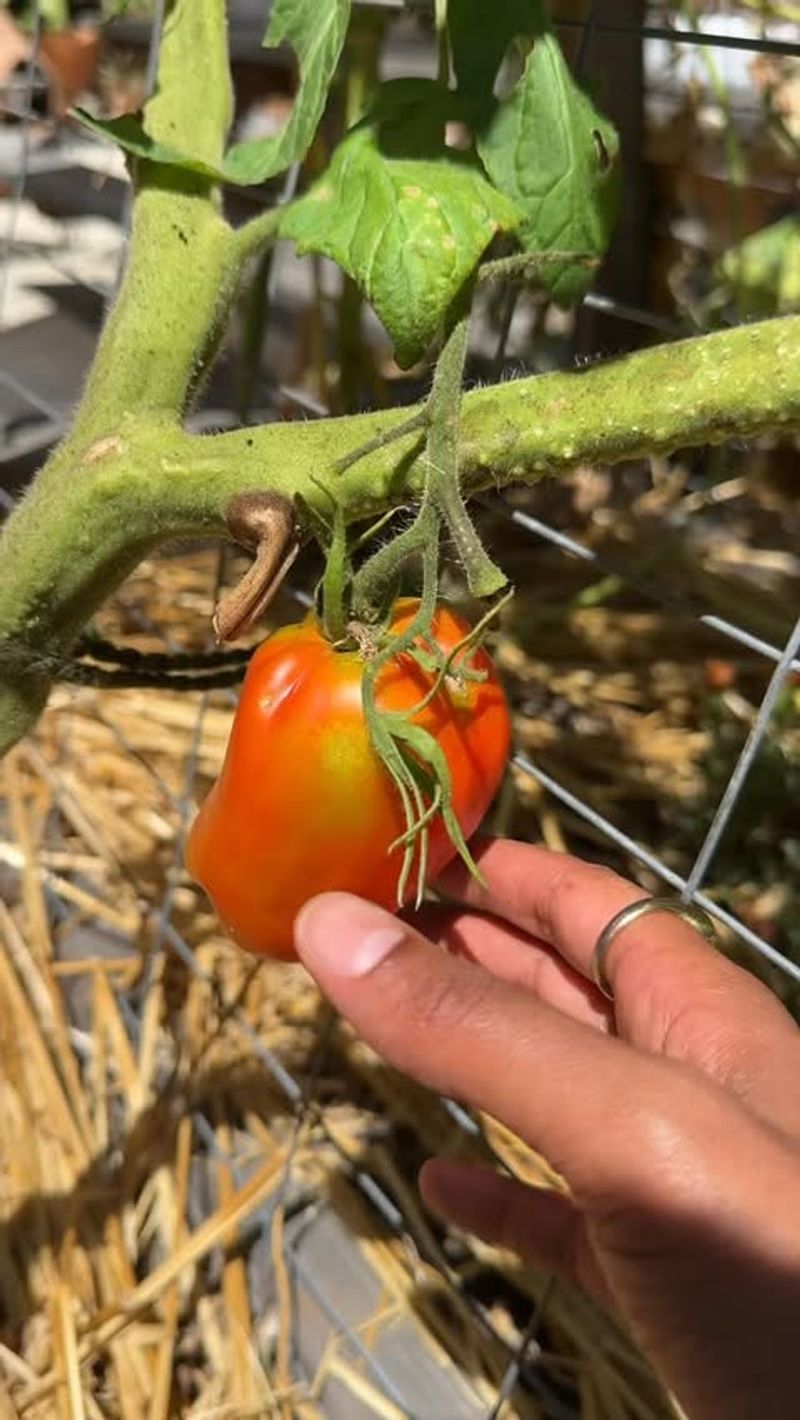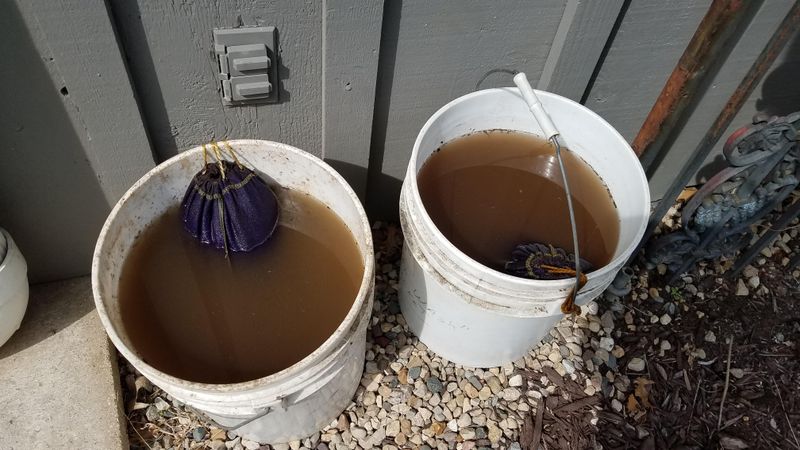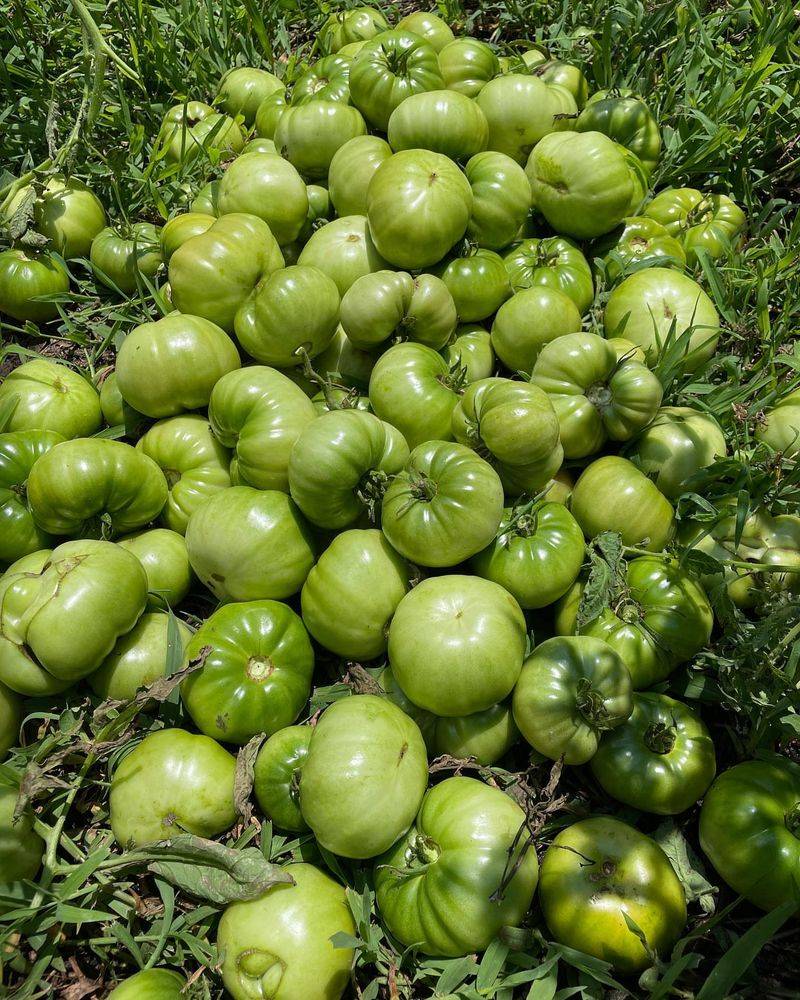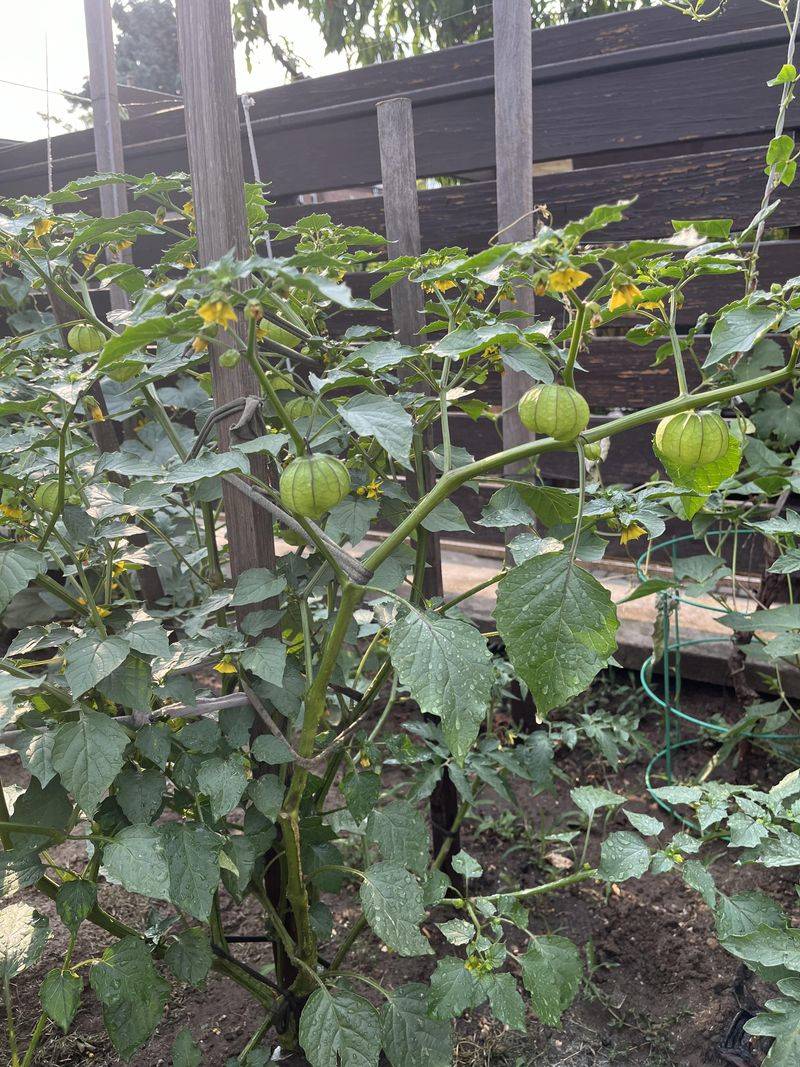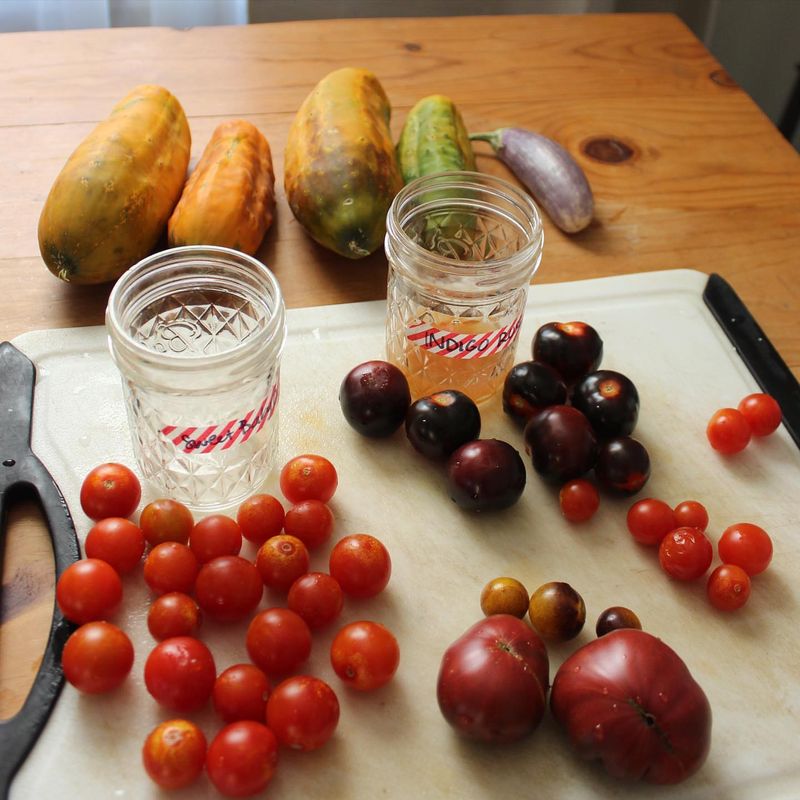I used to let my tomato plants do their own thing once summer started winding down—but not anymore. In New York, a few quick steps in late summer can keep them going strong into fall.
Pruning, feeding, and a little support can make a big difference this time of year. I’ve seen mine bounce back with fresh growth and even more fruit!
If you’re not ready to say goodbye to your tomatoes, here’s what to do now.
1. Prune Aggressively
Late August is perfect for giving your tomato plants a serious haircut in New York gardens. Remove yellowing leaves, unproductive stems, and any growth unlikely to produce ripe fruit before frost.
This redirects the plant’s energy to ripening existing tomatoes rather than growing new ones that won’t mature. Many upstate gardeners find this single step can accelerate final ripening by up to two weeks!
2. Remove New Flowers
Those pretty yellow blossoms appearing in September are actually stealing energy from your existing fruit. Pinch them off immediately to help your New York tomatoes focus on ripening what’s already growing.
Long Island gardeners swear by this technique when the nights start cooling down. The plant will redirect nutrients to developing fruit instead of wasting resources on flowers that won’t have time to produce.
3. Apply Potassium Boost
A late-season application of potassium-rich fertilizer helps tomato plants weather New York’s unpredictable fall temperatures. Look for fertilizers with a high middle number or try a banana peel tea for an organic option.
Hudson Valley gardeners notice stronger stems and better disease resistance after this treatment. Avoid nitrogen-heavy fertilizers now, as they promote leafy growth when you want the plant focusing on fruit development.
4. Mulch Deeply
Adding a fresh 3-inch layer of mulch around your tomato plants insulates roots from New York’s fluctuating fall temperatures. Straw, shredded leaves, or pine needles work wonderfully for this purpose.
Gardeners in the Catskills region find this technique particularly effective as evening temperatures begin to drop. Proper mulching also reduces watering needs and suppresses late-season weeds that compete for nutrients.
5. Reduce Watering
As September progresses, gradually decrease watering frequency but maintain depth when you do water. New York’s autumn brings more natural moisture, and reduced watering encourages tomatoes to ripen faster.
Finger Lakes gardeners typically cut watering by half during this transition period. Be careful not to shock plants with sudden changes – a gradual reduction over two weeks works best for most varieties.
6. Install Row Covers
Lightweight row covers can extend your growing season by protecting plants from early frosts common in New York’s northern regions. Keep them handy and drape over plants when temperatures threaten to dip below 50°F.
Buffalo area gardeners gain an extra 2-3 weeks of growing time with this simple trick. Remove covers during sunny days to prevent overheating and allow pollinators access if you still have flowers.
7. Pick Tomatoes Earlier
Start harvesting tomatoes at the first blush of color rather than waiting for full ripeness on the vine. New York’s unpredictable fall weather makes this a safer approach for maximizing your harvest.
Many Syracuse gardeners begin this practice by mid-September. These slightly underripe tomatoes will continue to redden indoors at room temperature, and often develop better flavor than those left to face cold nights.
8. Create Warmth Pockets
Placing dark-colored stones or filled water jugs around tomato plants absorbs daytime heat and releases it slowly overnight. This microclimate trick helps New York gardens in exposed locations maintain warmer temperatures around plants.
Westchester gardeners find this especially useful for extending the season of heat-loving varieties. The stored thermal energy can raise nighttime temperatures around your plants by several crucial degrees during those first chilly nights.
9. Clean Fallen Debris
Regularly remove fallen leaves and fruit from around your tomato plants to prevent disease spread. New York’s fall humidity creates perfect conditions for fungal problems if garden hygiene is neglected.
Gardeners in the Adirondack region make this a weekly ritual once temperatures cool. Maintaining clean soil surface reduces overwintering pathogens and pests, giving next year’s garden a healthier start.
10. Apply Compost Tea
A September application of compost tea boosts plant immunity against fall diseases common in New York gardens. This natural brew introduces beneficial microorganisms that help plants resist late blight and other seasonal threats.
Brooklyn community gardeners share this technique as temperatures drop. Apply as a soil drench and foliar spray every two weeks until harvest ends, focusing on early morning application for best absorption.
11. Stake Reinforcement
Heavy fruit-laden plants become vulnerable to New York’s gusty fall winds. Check and reinforce stakes, cages, or trellises to prevent toppling that can damage stems and fruit.
Gardeners in Rochester’s windy neighborhoods consider this essential September maintenance. Add additional support if needed, particularly for indeterminate varieties that have grown tall and top-heavy through the summer months.
12. Create Rain Protection
Excess moisture from New York’s fall rains can split ripening tomatoes. Construct simple rain shields using plastic sheeting suspended above plants, ensuring sides remain open for airflow.
Ithaca gardeners implement this trick by late August to prevent crop loss. The protection blocks direct rainfall while still allowing essential air circulation that prevents fungal issues common in our humid autumn climate.
13. Harvest Green Tomatoes
When the first hard frost threatens, harvest all remaining green tomatoes for indoor ripening or culinary use. New York’s growing season often ends abruptly, making this final harvest crucial.
Albany gardeners typically prepare for this moment by early October. Even completely green tomatoes can be ripened on a sunny windowsill or transformed into delicious fried green tomatoes, pickles, or relishes.
14. Apply Aspirin Spray
A diluted aspirin solution sprayed on tomato plants triggers their natural defense mechanisms against fall diseases. Mix one uncoated aspirin tablet in a gallon of water and apply every two weeks.
Gardeners in New York’s Finger Lakes region report stronger plants and extended harvests with this technique. The salicylic acid in aspirin activates the plant’s immune response, similar to how our bodies fight infection.
15. Save Seeds Properly
Select your healthiest, tastiest tomatoes for seed saving before New York’s growing season ends. Choose fully ripe fruits from plants that performed well despite seasonal challenges.
Gardeners in the Mohawk Valley maintain local varieties adapted to our climate through this practice. Properly saved seeds connect your garden to next year’s, preserving varieties that have proven themselves in your specific New York microclimate.

